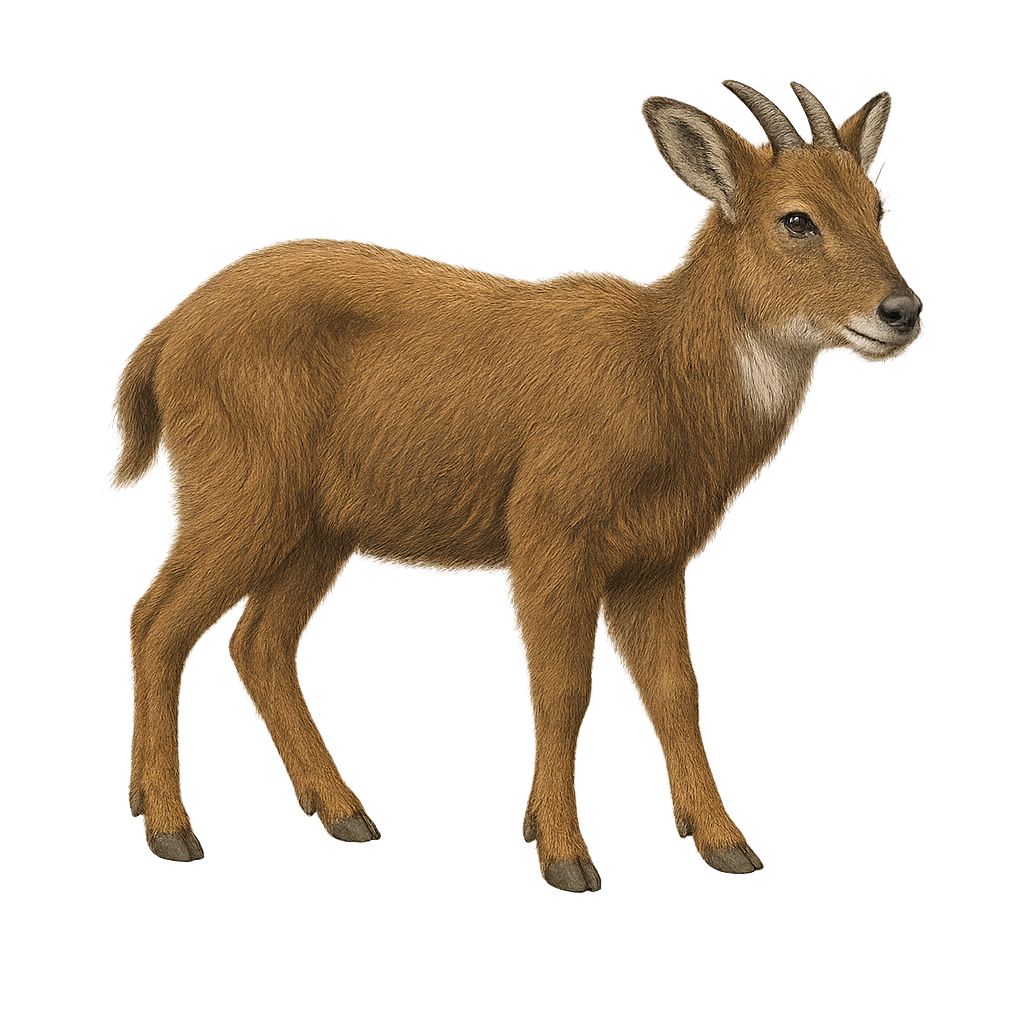Your wildlife photography guide.
Explore the goral in detail, study its behavior, prepare your shots.
Where to observe and photograph the goral in the wild
Learn where and when to spot the goral in the wild, how to identify the species based on distinctive features, and what natural environments it inhabits. The WildlifePhotographer app offers tailored photography tips that reflect the goral’s behavior, helping you capture better wildlife images. Explore the full species profile for key information including description, habitat, active periods, and approach techniques.
Goral
Scientific name: Naemorhedus goral

IUCN Status: Near Threatened
Family: BOVIDAE
Group: Mammals
Sensitivity to human approach: Suspicious
Minimum approach distance: 50 m
Rut period: January to February
Gestation: 360-390 jours
Births: January
Habitat:
mixed forests, alpine meadows, rocky slopes
Activity period :
Primarily active during the day, with peak activity in the morning and late afternoon.
Identification and description:
The goral, Naemorhedus goral, is a robust and agile caprine, primarily inhabiting the mountainous regions of Asia, notably in India, Nepal, and China. It is characterized by its dense gray fur, short curved horns, and its ability to move easily on steep terrains. Gorals are social animals, forming small groups, although they can also be solitary. They mainly feed on leaves, grasses, and young shoots. Their preferred habitat includes mixed forests and alpine meadows, where they find refuge and food. Although their population is stable, they are threatened by hunting and the loss of their natural habitat.
Recommended lens:
400 mm – adjust based on distance, desired framing (portrait or habitat), and approach conditions.
Photography tips:
To photograph the goral, it is advisable to use a telephoto lens of at least 400 mm to capture detailed images from a distance. As gorals are suspicious, it is important to maintain a safety distance of at least 50 m to avoid disturbing them. Prefer early morning or late afternoon hours to benefit from soft light and avoid harsh shadows. Be patient and discreet, blending into the environment to observe their natural behavior. Use a tripod to stabilize your camera and get sharp images even from a long distance.
The WildlifePhotographer App is coming soon!
Be the first to explore the best nature spots, track rutting seasons, log your observations, and observe more wildlife.
Already 1 431 wildlife lovers subscribed worldwide

